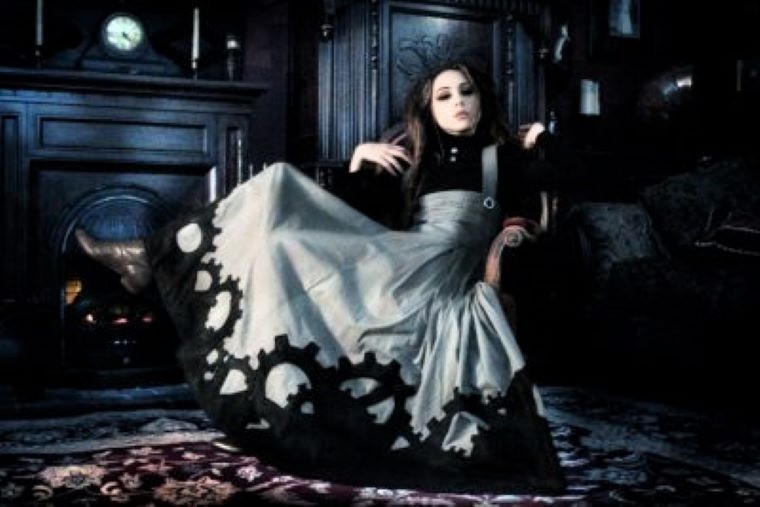
Take a quick stroll through any of the many Highland games and Celtic festivals found around the world each year and there is a good chance that you will catch some colourful Celtic costumes; Scottish tartans of all shapes and styles, Irish sweaters and peaked caps, and traditional tall hats worn by the Welsh and Breton. If you are lucky, you might see the rich garb of Galician Gaitas, classic Cornish dance outfits, and even marvelous Manx headdresses.
And while many Celtic peoples still wear their ancestral identity on their sleeves, their clothing – and their identity – is being redesigned.
That dynamic – the process of defining, redefining, and refining what it means to be Celtic today – can be seen via the shift in styles.
Call it Celtic couture, Celtic chic, cross-Celtic, pan-Celtic…whatever the moniker, it reflects the evolution of a people and its culture.
“It is the combination of old world Celtic and contemporary design,” says Regina Tierney of Celtic Fusion from her home near Ennis, Co. Clare, along Ireland’s plush west coast.
Raised amidst that lush landscape, Tierney was exposed to a myriad of ancient Celtic traditions; embracing and expressing those customs through design is how she chooses to celebrate her heritage.
“Celtic Fusion has become an outward expression of my own taste and my connection to my ancestors. I am a woman of the world; I travel a lot, I seek new ideas and trends, and I combine the new with the old to create something that allows me, and my clients, a chance to reconnect with our roots in a way that is both fashionable and wearable.”
Although contemporary Celtic attire might not always resemble the traditional wear worn by your forebears, threads of that legacy remain, passed down through generations.
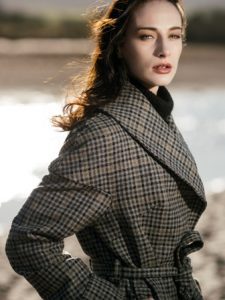
For many of today’s top Celtic designers, the passion for fashion began at home.
“My great grandmother was a professional seamstress and her father was a tailor,” shares Scottish stylist Siobhan MacKenzie. “I used to watch her sew the most beautiful sequin patterns onto the plainest of sweaters and transform them into statement pieces – her style was iconic. As a child I would always sketch clothes, and I decided at ten years of age that I would be a fashion designer.”
Aideen Bodkin of Dublin had a similar experience.
“My mum and grandmother showed me how to knit, crochet, embroider and sew. I enjoyed being creative. I got my first sewing machine at 13. I loved it, and I knew right away what I wanted to do with my life.”
Deirdre Duffy of Co. Mayo, Ireland, was first introduced to design by her grandmother as well.
“She was an Aran hand-knitter in Ballinahown. At the time, a lot of housewives would knit Aran sweaters for Irish companies to send to the U.S.A. Granny was a super-knitter; her hands knew the stitch more than her brain did. I never remember actually learning to knit – I was just surrounded by it all the time as a child and it seeped in by osmosis.”
Some took that family crafting to imaginative places.
“I was fortunate to have two very stylish grandmothers,” shares Jane Skovgaard of Kinsale-based Charlotte & Jane, near Cork. “Each had beautiful clothes made for them, which they would help to design with their dress-makers. I found this fascinating, and loved that they would involve me. As a child, the first thing I would do when visiting them was head straight to their wardrobe and browse through their clothes, bags, gloves, jewelry, and try on all their shoes. I would lay out outfits for myself, and often put on fashion shows with my cousins and sisters as the models. I always had my own ideas about how I wanted to dress, and started making and customizing my own clothes at the age of eleven.”
Nova Scotia designer Veronica MacIsaac, whose parents Mac and Rosemary are world-renowned kilt-makers, is carrying on her family’s tradition.
“I have been in the tartan world all of my life, and I can’t remember a time I wasn’t interested in fashion. My mother taught me to sew when I was four, and I was always welcome to be creative with bits of fabric. I remember my mother and I made tartan sheath dresses for a festival and people were constantly commenting on them. That’s the first time it ever occurred to me there could be a demand for tartan clothing.”
From homespun roots, the pattern towards professional success varied; some undertook formal training, studying at art schools or design institutes, while others mentored under established labels. Many simply made their own way, learning from their daily, hands-on experiences.
And while ways and means may have differed, the goal for each has been the same; to produce the best item of clothing possible.
“I like quality and timeless beauty,” shares Nova Scotia stylist Katherine Feiel. “I want to know that a garment is so well-made that it will stand the test of time, and that it won’t be so trendy that I cannot wear it for a number of years.”
Across the Atlantic Ocean, Belfast-based couturier Chloe Duggan agrees.
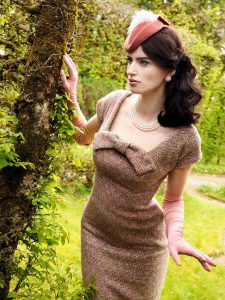
“Quality is everything; it affects how long-lasting your garment is, how it fits and drapes on the body, and how it feels to wear it.”
She adds that the idea of timelessness runs contrary to modern society’s penchant for disposable – or “throwaway” – culture.
“I want my clients to fall in love with my pieces and have them as staples in their wardrobes for years to come. Good quality doesn’t always cost a fortune either, which is commonly misconstrued with higher-end clothing.”
South of the border in Dublin, designer Niall Tyrrell believes it is all about how one wears it.
“A good item of clothing should always feel just perfect when you put it on; it should make you feel great, give you confidence and – above all – it should feel like a great friend that you can rely on. This, I believe, is the secret language of good clothes.”
Down the street from Tyrrell, Katie O’Riordan of Theo & George shares the sentiment.
“You need to look and feel good in the piece. There is nothing that makes someone look better than confidence – and a beautiful garment will do this.”
“A good item of clothing comes back to the threads and the fibers that it was created with,” adds Regina Tierney. “When something is real you can feel it with your fingers and your heart.”
As such, notes Scotalian fashionista Silvia Pellegrino, a fine piece is born from the love and intention that has been put into it.
“Every detail must be cured; from the choice of the fabrics, the color combination and the tailoring, to the font type used on your swing tags. I believe in offering not just a design, but a whole experience.”
Bringing that experience to life is not without its challenges, however.
Ask any fashion designer and they will tell you that, while truly a labour of love, piecing it all together is hard work.
“It is always a challenge to come up with something new and fresh every season,” explains Fiona Heaney of Dublin-based Fee-G. “And with commercial deadlines there is a time constraint on the creative process. Also, some elements are simply outside of my control, including fabric quality, trims, construction, patterns, etc – there are many aspects involved in the process.”
Staying ahead of the curve is essential, says Paul Sullivan of Ireland’s Eye Knitwear.
“Like any business, you need to continually innovate. We are always looking to improve in every aspect of what we do. In addition, you have the constant change that is a feature of the fashion and clothing industry, with several new knitwear collections needed every year – and that means changes in trends, colours, shapes, etc, so you are constantly developing new products.”
For some, balancing business and family life can be stressful.
“Time management is the key,” shares Irish hat-maker Suzie Mahoney. “Both areas of my life are very important, and it is imperative that I don’t miss out on family demands. That is a non-negotiable.
“Learning new IT and social media skills is also a necessary part of maintaining a visual presence in the marketplace. Having experience on computers, and having support available to me, allows me to learn and to adapt my business to these challenges.”
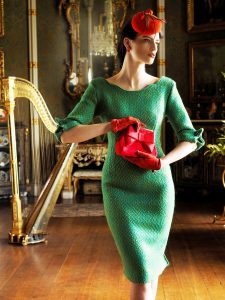
Manx designer Claire Christian concurs.
“Consumers today are more demanding, quality savvy, and have unpredictable purchase power. We need to work harder to keep up with smarter shoppers, reaching customers in new, but personal ways through technology.”
Siobhan MacKenzie agrees that generating visibility in the marketplace is a must.
“It is challenging as a small brand with a unique product; you are a small fish in a very big pond, and you don’t have the same type of marketing budget as a large brand so you have to be innovative in the ways you try to reach your customers.”
Others see troubling trends in the marketplace.
“The retail industry as a whole is challenged at the moment,” admits Katie O’Riordan.
“Consumers are demanding instant product availability and access, and the fast-fashion movement has trends starting and disappearing overnight. This is making it more challenging for independent designers to compete with major retailers. Independent boutiques are closing at a rapid rate, and consumers are spending their clothing budgets on disposable, inexpensive clothing.”
“It is a competitive industry,” adds Natalie B Coleman of Dublin. “High street has taken over from independent designers, so it is particularly important to not try to compete, but to offer an alternative in something that is uniquely crafted.”
As Charlotte Cargin of Charlotte & Jane believes, however, where there is a will, there is a way.
“Starting and running a business is an enormous challenge. We had to begin at the very bottom and slowly, through hard work and sheer determination, work our way up. That first year we sewed every garment ourselves, working day and night, and living on little else but rice! But we laughed our way through the hardships, as we knew in our hearts that it would all work out in the end. Thankfully, we had enormous support from the media and encouragement from our clients. When we reached the point that we had so many dresses to make we could no longer do it alone, finding suitably trained dress makers was a huge challenge. So, for a year we taught a dress-making course alongside running the business, and we are now blessed to have four wonderful local dress-makers working with us.”
Long hours, hard work, high costs, strong competition, an erratic marketplace, labour issues, balancing family life, keeping creative – it is a wonder that so many designers continue to do what they do.
“I consider myself an entrepreneur and really enjoy being my own boss,” says Katherine Feiel. “I can work when and how I choose and benefit personally from my hard work. I love the creative aspects, being finicky and making a piece as absolutely beautiful as possible, coming up with new ideas and solutions to design challenges. I think my absolute favorite reward is the reaction I get from satisfied clients.”
It is a common sentiment.
“The biggest reward for me is a happy customer,” says Siobhan MacKenzie. “It makes everything worthwhile.”
“Seeing my designs being worn by ladies all over the country is the greatest reward of doing what I do,” agrees Fiona Heaney.
“I wake up happy, knowing that so many people can feel inspired and more confident in their daily life experiences because of my designs,” adds Silvia Pellegrino.
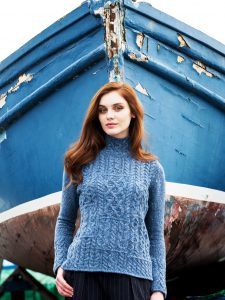
“Doing something I love and having people appreciate the effort that has gone into the design and craftsmanship is beyond fulfilling,” notes Natalie B Coleman.
“The greatest reward is meeting someone who really connects with my designs,” shares Regina Tierney. “Many times, a person has discovered my work and has dreamt about the clothing I have created. This kind of connection is beyond words.”
Multi award-winning Irish designer Marion Murphy-Cooney can relate.
“I take great pride in designing for the special occasions in people’s lives. This is what motivates me, and it is my favourite part of the job. Those experiences also make me realize the power of clothing, and that it is a language all its own.”
“I cherish creating quality, sustainable clothes that are ethically made and fashion forward,” says Katie O’Riordan. “Ultimately, I love the process of design; from concept to production, to seeing my garments being worn on the street.”
To that end, for many designers, the journey is the destination.
“I really enjoy the time that I set aside simply to design,” notes Niall Tyrrell. “The ultimate creative reward is having an inspired concept in my head and watching it come to life through a sketch, which then leads to the creation of a pattern, leading to the finished garment – all of that began with an idea.”
Jane Skovgaard sums up success succinctly.
“The rewards are plentiful. The satisfaction of having set up our own successful business is enormous, and the perks of being self-employed are amazing – we are now able to take time out when we need to feed ourselves with new inspiration.
“And we absolutely love working directly with each client and seeing how joyful they are to have beautiful custom-made outfits. We meet wonderful people all the time and help them to look their best for significant occasions in their lives. There is simply nothing better than receiving messages of thanks from satisfied clients, along with photographs of them wearing our designs.”
While most reap a bevy of both personal and professional rewards, there is also the deeper satisfaction of knowing that they are a piece of something bigger than themselves – something that continues to grow over time. As such, like their businesses and their creative crop, Celtic couture is a work in progress.
“Celtic culture is evolving,” says Regina Tierney. “Our language, our arts and customs – all of the elements that comprise who we are as a community – are being redefined and redesigned. Our sense of style is a vital – and very beautiful – part of that refashioning.
“Still,” she adds, “there is simply no denying where we come from. Our heritage is deeply woven into our DNA, and what we wear is the outward expression of who we are. These are the threads that preserve and promote our cultural identity.”




















Leave a Comment